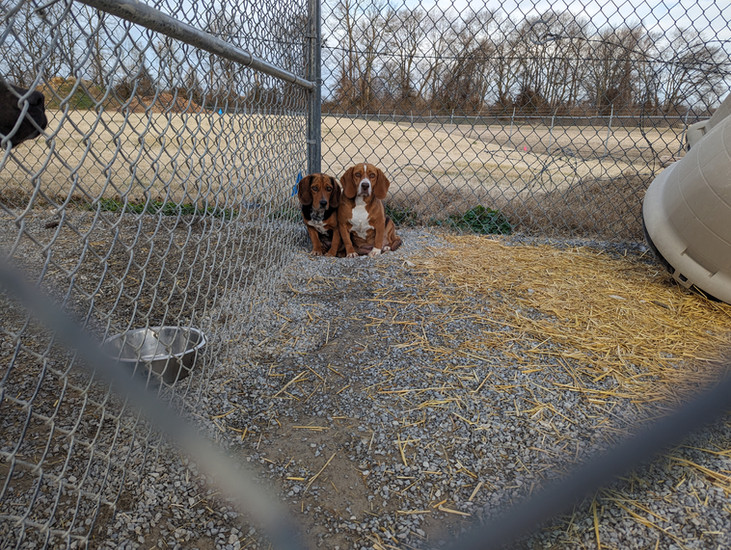Union County Animal Control: Small Shelter, Big Heart
- Eric
- Feb 5, 2024
- 2 min read
Updated: Jun 24, 2024
The road to Union County Animal Control (UCAC) in Morganfield, Kentucky, is much like any other in a working-class American county: functional, straightforward, and unassuming. There's no fanfare on the approach to the shelter, but what it lacks in grandeur, it more than makes up for in heart and purpose.

With only eight kennels, UCAC may appear modest at first glance, but its walls have witnessed the kind of compassion and resolve that's hard to quantify, but we'll give it a shot. In 2023 alone, this open-intake shelter welcomed 583 dogs. Crowded? Yes, but it's a necessary reality for a facility that is the only hope for many dogs in the county. The staff often doubles up occupants in kennels, not out of choice, but necessity. It's a pragmatic approach to a problem that UCAC faces head-on every day.
One cannot talk about Union County Animal Control and it's transformation without talking about Kathy Baird. Kathy, the Dog Warden (a title she prefers to avoid) and Director of UCAC, is the driving force behind the shelter. Her progressive leadership and no-nonsense dedication to animal welfare have played a pivotal role in the shelter's transformation from a high euthanasia facility to a "no kill" shelter. This turnaround is nothing short of remarkable, given that before Kathy's arrival, the euthanasia rates topped 90%.

The shelter's small team, consisting of two full-time employees and one part-time employee, handle everything from vet trips to daily exercise routines. Each dog is given the care they need, with the limited resources available, to prepare them for a new home or a transfer to a rescue organization. This tireless work has led to 384 dogs finding safety with rescues, including Happy Bark, in the past year alone. This feat is made possible through UCAC's strong partnerships with rescue groups. These relationships are the shelter's lifeline, ensuring that dogs have a chance at a better life beyond the county's borders.
The facility itself is straightforward and functional. The kennels, while clean and well-maintained, are a reminder of the shelter's constant battle against space and time. Every square inch is utilized for the benefit of the canine residents, each of whom awaits a chance at a new beginning.
UCAC's approach extends beyond animal care; it's also branching out for community education on responsible pet ownership and the critical need for spaying and neutering. Visits to community schools to engage with students is an attempt to change the views on responsible animal ownership in the area. The shelter advocates for change, not only in the lives of individual dogs but within the community's collective consciousness.

Our visit to Union County Animal Control was an eye-opening experience. It showcased what dedication, collaboration, and hard work could achieve, even within the constraints of limited space, budget, and other resources. The shelter stands as a beacon of hope, proving that a small group of committed individuals can indeed make a substantial impact.
As we left UCAC, the impression it left on us was clear: it's not the size of the shelter that matters, but the size of the commitment to make a difference. And in that, Union County Animal Control stands tall.












